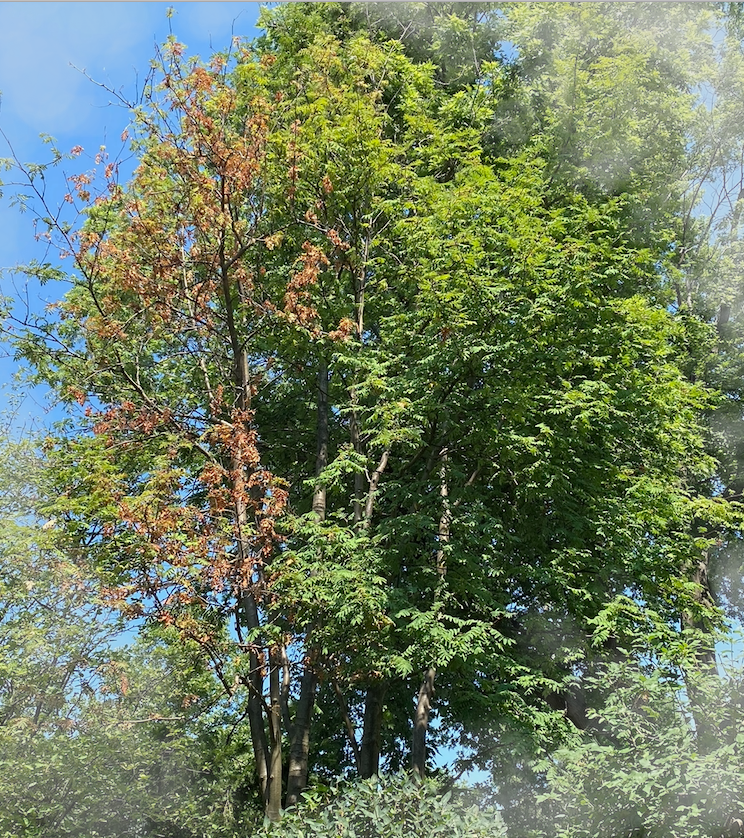
Hi.
I planted this 4-trunk Mountain Ash over 20-25 years ago.
This summer finds a lot of gradual die-off of the top of one of the trunks. Any idea why this would happen? There are a few woodpecker holes here and there on all the trunks if that is a clue. Also a neighbour’s massive maple is now growing into the top but the healthy parts of my tree don’t seem to care. In the attached image I softened some of the surrounding greenery in Photoshop so you could see clearly what is Mountain Ash versus everything else.
Would love your thoughts on what you think it is and what you think I could do to help/save it.
Thanks. – Andy
The good news is that because Mountain Ash (Sorbus spp.) is not the same species as plain Ash ((Fraxinus spp.), the Emerald Ash Borer is not the culprit. Unfortunately, Mountain Ash are subject to many other diseases and pests. Some of the most notable include fire blight and cankers, about which you can read here and here. As you will see, both require mechanical intervention (pruning) and in the case of fire blight, the application of a copper solution. Please have a good look at the descriptions provided there, and see if you recognize the problem.
You did mention many “woodpecker holes”. Are these large holes or small? Mountain Ash are also subject to attack from longhorned beetles or roundheaded wood borers, which leave small holes in the bark. You can see, and learn more about them, here.
With this guidance, have a closer look at your tree and see if you can identify the problem and take the appropriate action.
However, looking at the degree to which that one section has been damaged, it may be best for you to call in an arborist to remove that dead wood and evaluate the rest of the tree. You can find a qualified arborist through the professional association here.
One of the things the arborist will consider is the increasingly-reported Mountain Ash Decline, a gradual decline of trees due to changes in environmental air quality. The symptoms of this decline include leaves that change color to pale green then yellow, or to orange and brown. These leaves will then die and dry up. The berries are also affected. They will dry up either before or after maturity. These symptoms often occur only at the tips of branches, but may also occur along entire branches. The trees abnormally retain old leaves and fruits over the winter.
Good luck with your Mountain Ash.

